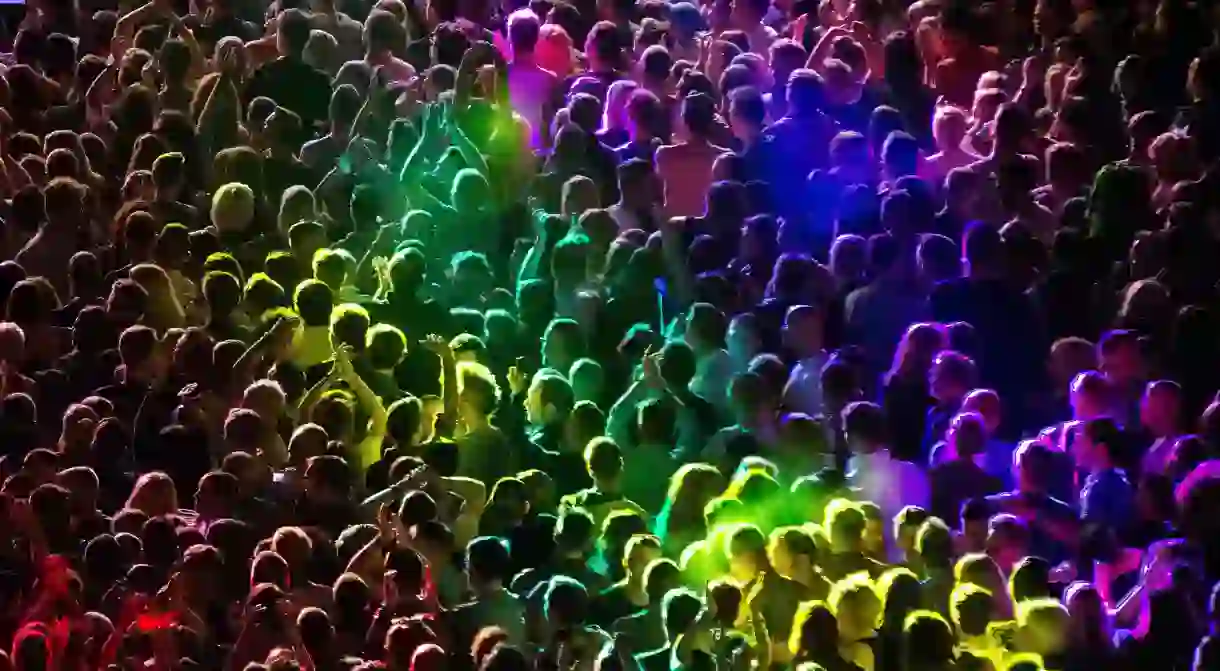Why the Rainbow Flag Is Dividing the LGBTQ Community

Manchester Pride has adopted a new flag, and people aren’t happy. The iconic rainbow flag helped define the modern-day Pride movement, but now a variation on the design is dividing it.
The history of the rainbow flag
The rainbow flag, also known as the Pride flag, is synonymous with the LGBTQ community all over the world.
Originally created in 1978 by San Francisco artist Gilbert Baker as part of a collective, it’s become a symbol of hope, as well as a cultural shortcut to represent all things LGBTQ.
In 2019, Manchester Pride announced that it would be adopting a new iteration of the famous flag as part of wider changes in its annual celebrations. This new version, originally created in 2017, includes black and brown stripes in order to better recognise BAME (black, Asian and minority ethnic) LGBTQ people.
When the BBC and leading gay magazine Attitude reported on the story, hundreds of comments were posted – largely denouncing the change.

Reflecting the diversity of the LGBTQ community
At first, the flag featured eight different colours. Baker intended these to “reflect the diversity of the LGBT community.”
The original colours were red to represent life, orange for healing, yellow for sunlight, green for nature, indigo for serenity, violet for spirit – but hot pink (representing sex) and turquoise (for magic and art) were removed because of difficulty with manufacturing at the time.
Indigo and turquoise were later merged to become royal blue – completing the traditional six-stripe version that has become commonplace since 1979.
It is this original interpretation – which was intended to include everyone, regardless of race or gender – which has left people questioning the decision as at no point were any of the colours meant to represent skin colour.

How the Pride flag has changed over four decades
The design currently causing controversy in some quarters was adopted by the city of Philadelphia in 2017 as part of the More Color More Pride campaign. It added black and brown stripes to the top of the existing flag and was, at the time, divisive to many, including a friend of Baker’s, Charley Beal, who told NBC: “The stripes were not chosen for skin colour – they were chosen to reflect the spectrum of colour in nature.”
It’s not the first time that changes have been made to the flag, and it’s not even the most recent. A previous variation included a black stripe for those lost to AIDS, and in 2018 designer Daniel Quasar updated the Philadelphia version to highlight trans rights and issues. In this version the six-stripe design remains but has a chevron including added colours as an arrow that “points to the right to show forward movement, while being along the left edge shows that progress still needs to be made,” Quasar has said.
Response to criticism from Manchester Pride
The change by Manchester Pride – the first UK Pride to use the flag – has been welcomed by many, with many other commenters online pointing out the flag was never intended to be about race.
Chief Executive Mark Fletcher responded to the comments: “Pride is for everyone and we want to celebrate the differences and this was our way of doing it. I hope that those who don’t yet see the need will understand our reasons for making this change and grow to love it.”

What the original Pride flag creator intended
The Pride flag, like the LGBTQ community, will continue to evolve. It’s something that the original creator of the flag, Baker, was only too aware of.
“It’s not about changing or moving the fabric, or the colours, it’s about the meaning and interpretations of it that are changing and evolving,” he told Indy 100 editor Ryan John Butcher in 2016.

“When I made the Rainbow Flag in 1978, it was a gay liberation flag. The next year in 1979, it was a lesbian liberation flag. And then it became something for bisexuality and transsexuality. It reflects how we’ve changed and how we’re continuing to change – and so I’ve promised to be part of that, and hear the stories around the world from people about what it means to them, and how they’re using it. It makes me happy to see how people have incorporated it into their own lives and communities.”













